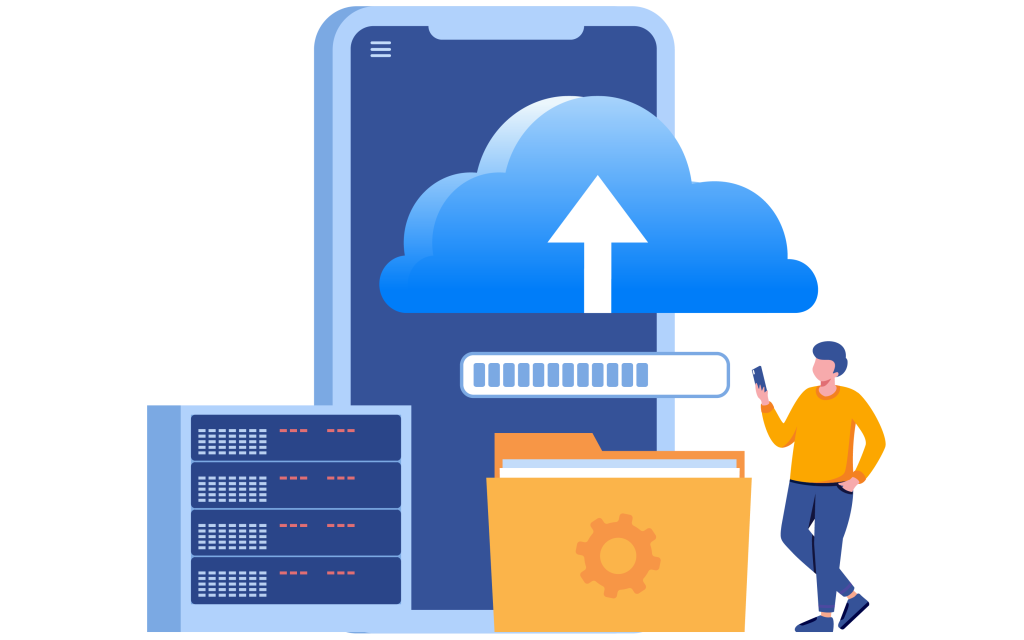Disaster Recovery India
Get in touch
Disaster Recovery as a Service (DRaaS) is a backup service that uses the cloud resources for protecting applications and data through getting lost for any reason be it system failure or human error or natural calamity. Organizations are assured of getting back all their data instantly and business continuity hence it is recommended as Business Continuity as a Service (BCaaS).
DRaaS develops a second system while replicating all the cloud data and the organizations begin to perform their daily operations using the second system till the time that the primary infrastructure gets repaired and functions normally. There are considerable benefits with DRaaS. It can recreate all types of applications. The data gets replicated on multiple servers and is always available even at times one or more servers fails.
It is customizable. It provides complete backup services that provide the clients with the option which data they want to get saved.
Cloud Disaster Recovery Services are necessary for any organization’s business continuity plan. It assures that critical functions begin operating in spite of disasters like natural events, cyber-attacks, or hardware failures. Kennies offers disaster recovery services that help organizations recover while storing their data and applications in the cloud for easy access. It is specifically beneficial for those requiring an on-premises infrastructure or seeking out to simplify disaster recovery solutions.
Kennies provides backup and recovery, disaster recovery as a service (DRaaS), site recovery, and data replication. Backup and recovery services assure to store data copies in the cloud for immediate restoration. DRaaS recovery includes recreating data to a secondary cloud location. Data Replication assures real-time duplication to a secondary location.

Stay on the topmost Cloud Disaster Recovery Services: Technical Specifications
Resilient Business Continuity
Every second counts when your business is offline, boosting productivity, customer experience, and your organization’s goodwill. Disaster recovery is helpful to protect crucial business operations while ensuring they can recover with minimal or no interruption.
Assured Security
Disaster Recovery Plans use data backup and other procedures that strengthen your security posture and limit the impact of attacks and other security risks. For instance, cloud-based disaster recovery solutions provide built-in security capacities, like advanced encryption, identity and access management and organizational policy.
Quicker Recovery
Disaster Recovery solutions develop restoring your data and workloads easier so you can get business operations back online immediately after a catastrophic event. DR Plans enhance data replication and rely on automated recovery to lower downtime and data loss.
Decreased Recovery Costs
The monetary impacts of a disaster event is significant, ranging through the loss of business and productivity to data privacy penalties to ransoms. With disaster recovery, you can avoid, or at least minimize, some of these costs. Cloud DR Processes lower the operating costs of running and maintain a secondary location.
High Availability
Multiple Cloud-based services come with high availability (HA) features that support your DR Strategy. HA Capabilities help to ensure an agreed level of performance and provide built-in redundancy and automatic failover, securing data against equipment failure and other smaller scale events that impact data availability.
Better Compliance
DR Planning ensures compliance needs while considering potential risks and defines a set of specific procedures and safeguards your data and workloads during a disaster. This involves strong data backup practices, DR Sites, and regularly tests your DR Plan so as to ensure that your organization is prepared.
Features and Functionalities of Disaster Recovery
Benefits of Disaster Recovery
Better Visibility: The major benefit of this compliance process is that it provides organizations with better visibility into their current security state.
Security: Robust Protective measures are helpful in keeping your business data safe and secure.
Cost Savings: Along with this, companies find cost savings through fewer breaches or incidents because of enhanced processes.
Meets Compliance Needs: There are regulatory and compliance needs about data protection and disaster recovery. Regular testing assures security against cyber threats.
Why choose Kennies Data Center for Disaster Recovery?
Top-Tier Infrastructure
Assure robust and reliable disaster recovery. The cutting-edge infrastructure assures maximum uptime and optimal performance.
Customized Solutions
Kennies offers tailored disaster recovery solutions that align with your specific business requirements.
Tier 3 Data Center
Kennies assures high availability with various redundant systems. This assures 99.995% uptime, lowering the risk of downtime during a disaster.
Network Connectivity
Kennies assists network connectivity, assuring rapid data transfer and recovery times. The network infrastructure supports disaster recovery.
24/7/365 Tech Support
The expert tech support team is available round the clock, all the time. This assures prompt assistance and swift resolution of any issues.
Location Redundancy
Kennies Data Center provides redundancy, spreading data around various geographical diverse sites. This lowers the risk of data loss.
What Our Client Says?
Kennies Data Center saved our business during a crucial data outage. Their disaster recovery solutions are unrivaled, assisting us with peace of mind knowing our data is secure and accessible round the clock.
Our business experienced a major disruption last year, however thanks to Kennies Data Center for providing maximum uptime. The reliability, security and professionalism of kennies’s team is truly appreciated.
Choose Kennies Data Center for Disaster Recovery requirements. Since this is one of the best decisions of life to connect with them. The top-tier infrastructure and Tier 3 capacities assure high availability.










